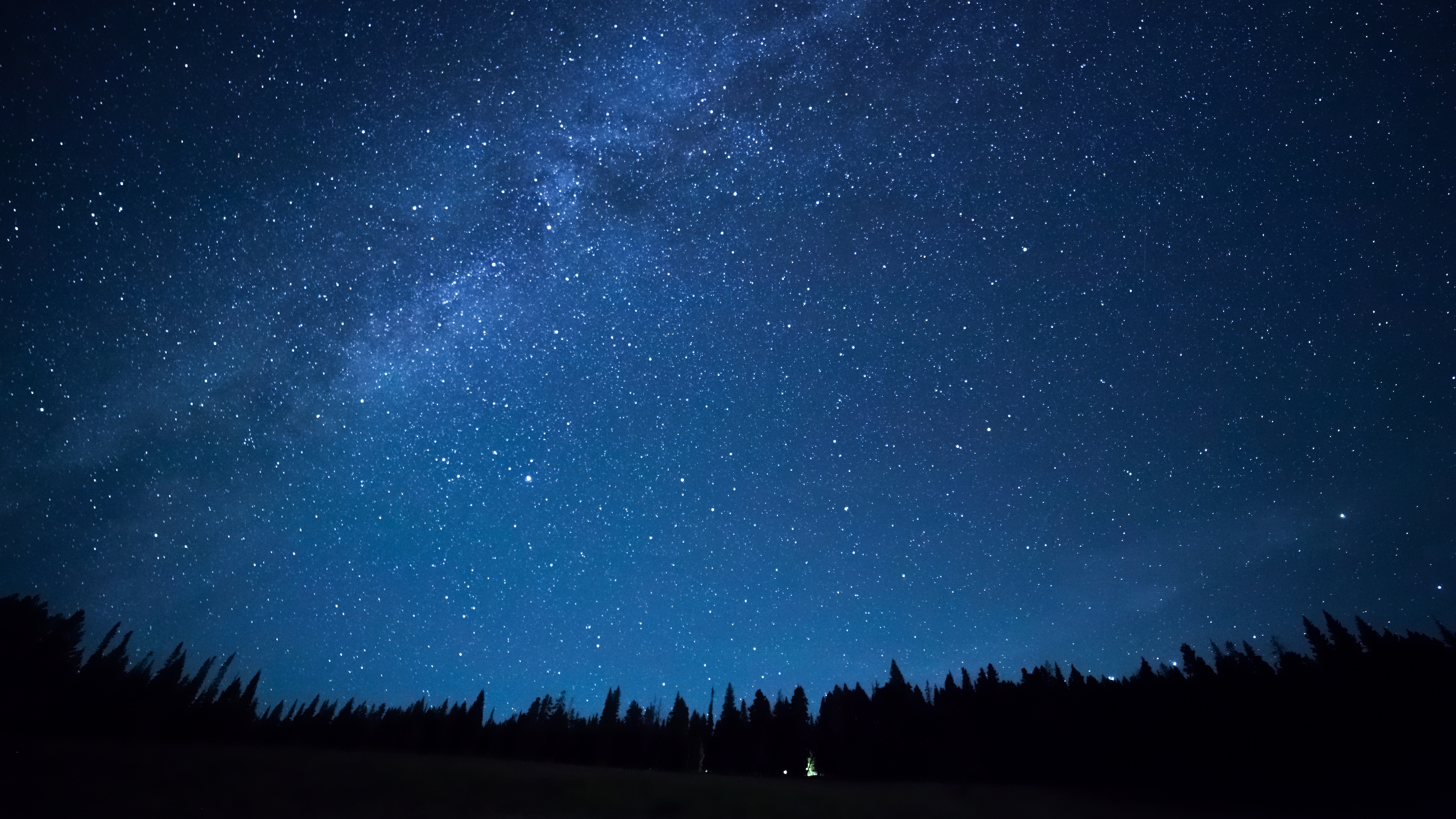New impact hypothesis might explain our Moon’s uniqueness
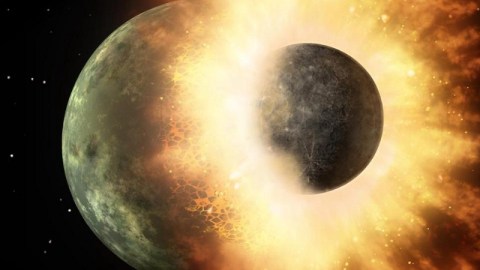
Our Moon might even be a rarer occurrence for a Solar System than an ‘Earth’ is.
“The pressure to compete, the fear somebody else will make the splash first, creates a frenzied environment in which a blizzard of information is presented and serious questions may not be raised.” –Carl Bernstein
When it comes to our place in the Solar System, we normally think of Earth as the unique, special world above all others. With its continents and oceans, copious amounts of liquid water and macroscopic, complex life, it’s the only home humanity’s ever known and the only world we know of capable of giving rise to us. But perhaps its Earth’s natural satellite — the Moon — that’s really the outlier in the Solar System. In a revolutionary new paper out this week in Nature, the team of Matija Ćuk, Douglas Hamilton, Simon Lock and Sarah Stewart might have discovered the link between the Earth, our unique Moon, and the birth of our Solar System.
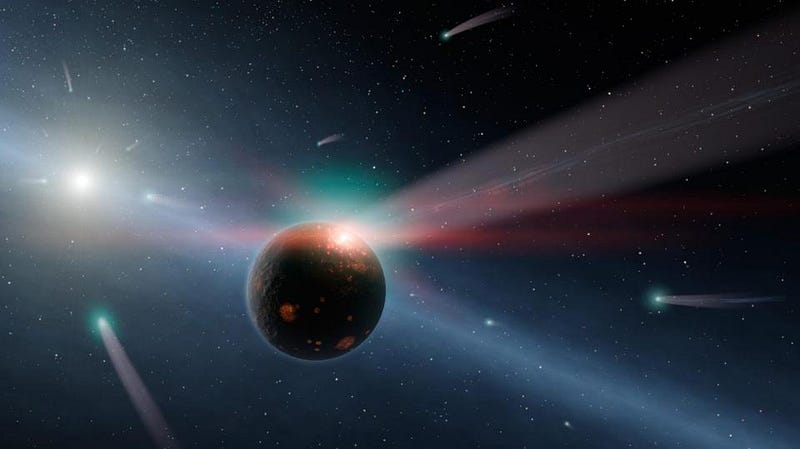
We’ve always thought of the early Solar System as a violent place, but unprecedented observations of newly-forming stars with planetary systems have taught us more than we’d ever imagined. When stars first form, they tend to have:
- a large amount of dust and rocky material that forms in a disk, rotating with the star,
- where the largest initial imperfections grow into planetesimals the fastest,
- accreting matter from other small, less major imperfections,
- with gravitational interactions either kicking most bodies out or into other bodies,
- while the sunlight boils off the dust over tens of millions of years,
- eventually forming a stable solar system,
not so different from our own.
In most cases, as simulations and observations have taught us, every planet and moon that forms has its own unique elemental composition based on the history of how it formed. Every planet has a unique density and a unique ratio of the different elements, and every Moon has a unique composition as well, distinct from its parent planet. Just like less dense materials float atop denser ones — Earth’s outer core floats atop the inner core, which the mantle floats upon, which the crust floats upon, followed by the ocean and the atmosphere — a gravitational and temperature gradient ensures that the planets and moons have different compositions from one another.
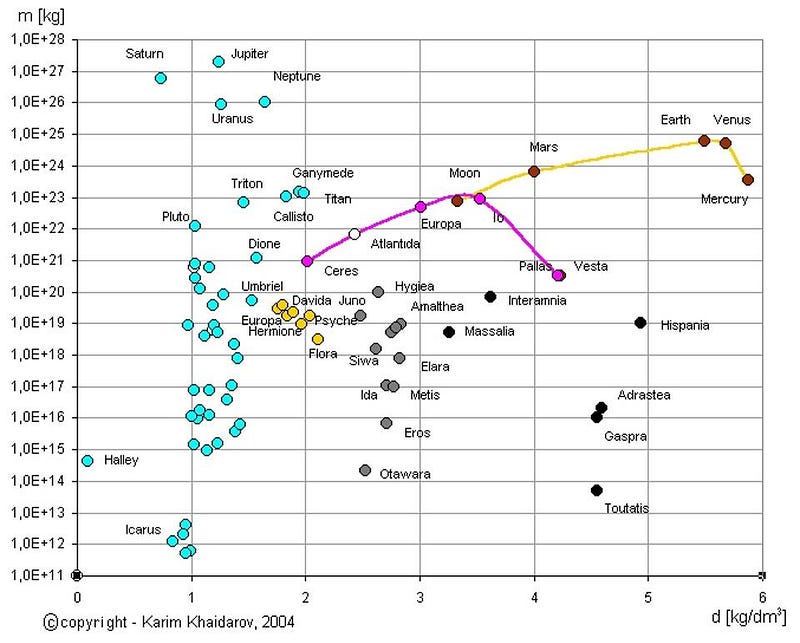
But our Moon seems to be the exception to all the normal rules. Its surface rocks have the same composition as Earth’s; it’s far, far larger and more massive compared to Earth than any other moon compared to its parent planet; it has a small, Earth-like iron core; it orbits out-of-plane of the Earth’s rotation and revolution; and it’s tidally locked to Earth but axially aligned almost perfectly (within 1.5º) with the Sun. The leading theory for how the Moon got to be formed is known as the Giant Impact Hypothesis, which states that a large, Mars-sized protoplanet struck a young Earth early on, kicking up debris which coalesced into the Moon.

But the conventional way of doing this is with a relatively gentle collision. This wouldn’t result in the Earth spinning so rapidly with such a massive (23.5º) tilt, and it wouldn’t result in the Moon orbiting out of the Earth-Sun plane. But if the initial, Moon-creating impact were fast and at an angle, according to this new paper, everything would work out.
- A fast, massively inclined collision could result in a young Earth spinning with a day of just 2–3 hours, where the equator was twice as wide as the poles.
- The incline could result in the Earth tilting significantly in one direction.
- And simultaneously, the Moon that formed would tilted many degrees out of the Earth-Sun plane.
Over billions of years, the Moon’s tilt could be reduced to just the 5º-out-of-the-plane we have today, while tidal friction would have slowed Earth’s rotation down to a mere 24 hours.
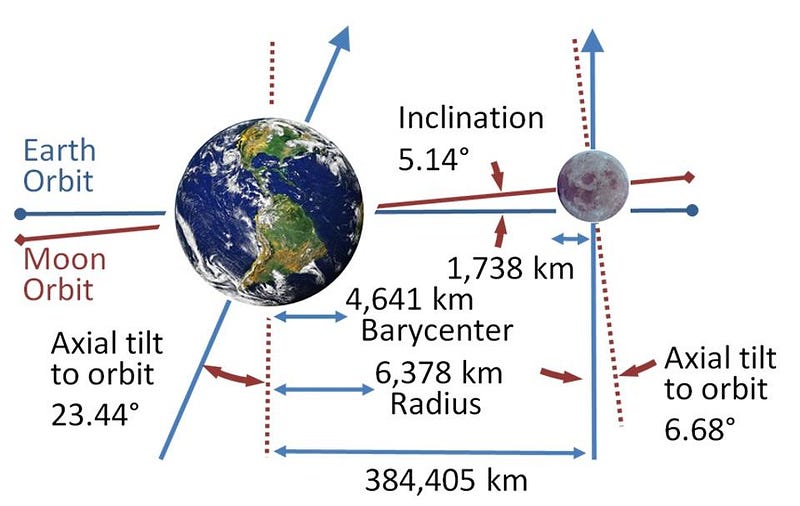
This also helps explain some nice oddities all in one go. “What’s beautiful about this work is that we can end up with the current state of the moon — its orbit, its chemistry — with just one step, without invoking any other event,” says Sarah Stewart, a coauthor on the study. If the Earth rotated on its axis before the impact, and if the protoplanet that collided with Earth were in the Earth-Sun plane, none of this would be possible. But with this, we not only get a rapidly spinning young Earth and a 24-hour, 23.5º tilted Earth today, but a Moon that orbits out of the plane, nearly locked to the Sun rotationally, and locked to the Earth revolution-wise. The pieces all fall together beautifully.

That doesn’t mean the theory is proven, of course. It simply means a computer model can faithfully reproduce what we observe today given the right initial condition. And, according to Space.com, it’s not like it takes some conspiracy of extraordinarily unlikely events to make this happen:
The likelihood that the early Earth was hit with the right properties to explain the current tilt of the moon’s orbit “is something like 30 percent,” Stewart said. “It’s reasonably likely.”

It’s an important and revolutionary new way of looking at how our fraternal twin worlds — the Earth and Moon — got their start. But it’s important to recognize, at this point, that it’s only a hypothesis for how things came to be. When it comes to the entire 4.5 billion year history of the Solar System, everything we know must be pieced together from the survivors.
This post first appeared at Forbes, and is brought to you ad-free by our Patreon supporters. Comment on our forum, & buy our first book: Beyond The Galaxy!



